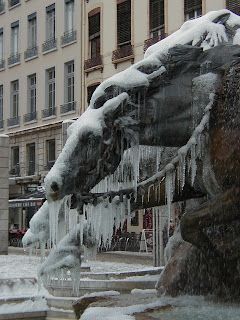The Hazards of Medieval Streets



The streets of Vieux-Lyon were laid out (or, more likely, evolved organically) in the 1st century AD, remained essentially unchanged through the medieval era and the Renaissance, survived the floods of the 19th century and the wars of the 20th, and because of UNESCO World Heritage protection,
 will avoid modernization and urban renewal.
will avoid modernization and urban renewal.Which is great for the area's charm. Winding, narrow cobblestone streets climbing or
 turning at absurd angles give plenty of opportunity for scenic strolls,
turning at absurd angles give plenty of opportunity for scenic strolls, archeological study or simple tourist gawking.
archeological study or simple tourist gawking.But they're murder on
 your car's resale value.
your car's resale value.Witness: Every single
 one of these photos was taken this morning on a single walk to the boulangerie and back (I did take a different route back for variety's sake). No two photos are of the same car.
one of these photos was taken this morning on a single walk to the boulangerie and back (I did take a different route back for variety's sake). No two photos are of the same car.The evidence is quite strong that the standard width of a Roman cart axle is juuuuust a bit narrower than the track of a 21st-century automobile with its wing mirror
 s extended.
s extended.[Bonus points if you can pick out the 80's Citroen XM with the hydropneumatic suspension, in perfect condition except for the mirror busted clean off.]
By the way, the little square gray sticker marked "CT" in each passenger-side windshield is the Controle-Technique certification, which is equivalent to our state inspection stickers. In French used-car ads you'll often see the words "CT OK", meaning "will pass inspection". They generally don't bother mentioning "mirror held on by packing tape".











